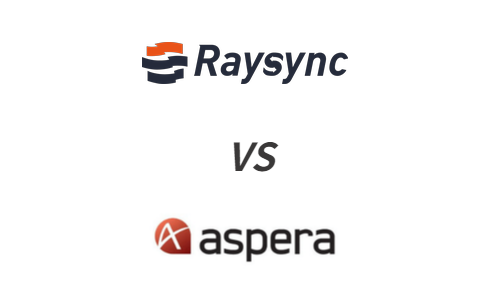How to Transfer Massive Small Files Quickly, Securely and Efficiently?
With the continuous progress of Internet technology, we have entered the era of information explosion. In this era, organizations have massive small files being transferred over the Internet every day. The demand for transferring large numbers of small files is also increasing. However, the transfer of massive small files is more difficult than the unusual and common transfer of large files. In the following, we will analyze the difficulties associated with massive small file transfer and introduce an efficient transfer scheme.
Part 1. Difficulties of Massive Small File Transfer
1. Inefficient transmission
Due to the large number of small files, the traditional transmission method will lead to extremely low efficiency. For example, if you want to transfer 10,000 small files of 1MB, if you use conventional FTP or HTTP transmission, even in a gigabit bandwidth environment, it will take a long time.
2. Difficulty in file management
Another problem of massive small files is the difficulty of file management. Due to the huge number of files, it is difficult to perform effective file management and tracking. In addition, if the file size is different, it is also easy to interrupt or lose the transmission.
3. High security risk
The security risk is also high during the transmission of huge numbers of small files. On the one hand, hackers may use the loopholes in the transmission process to steal files; on the other hand, due to the huge number of files, viruses or malware are also easier to hide and spread.
Part 2. The common transmission scheme for enterprise massive small file transmission
To solve the above problems, many enterprises have adopted distributed storage and transmission technology. This technology can divide files into multiple small pieces and store and transmit them on multiple nodes. This can greatly improve the efficiency of transmission and ensure the security and integrity of files.
However, there are some problems with this solution. First, it requires a large amount of storage and computing resources, which may increase the cost. Second, it is also more complicated to manage because it involves interaction and synchronization among multiple nodes. In addition, data inconsistency may occur because it involves data slicing and reorganization.
Part 3. Advantages of RAYSYNC in massive small file transmission
Raysync (private deployment solution, also can be accessed to public cloud, enterprise and social organization users can apply for a free trial) is a product specially designed for massive small file transfer. It adopts an innovative distributed transmission algorithm to ensure data security and integrity while ensuring transmission efficiency. Below we will introduce the advantages of Raysync in massive small file transfer in detail.
1. Disk I/O optimization technology
RAYSNYC has a built-in self-developed rayfile engine, which can deeply excavate and maximize the disk I/O performance to improve the reading and writing speed of small files. To meet the demand of massive small file transfer, RAMSON provides an excellent high-speed and stable guarantee to ensure that thousands of small files can be transferred per second, which significantly improves the transfer efficiency. This technology breaks through the traditional file transfer speed limitation and saves valuable time and resources for users.
2. Accelerated Transfer of Massive Small Files
With its rayfile file engine, Raysync can transfer more than 5000 small files per second. When it comes to millions of files, RAYSYNC can complete the file list transfer in just 5 minutes, which is more than 100 times faster than the traditional method. This makes RAYSYNC excel in handling many small files, which greatly improves efficiency in both file transfer and data backup.
3. Patented Technology to Solve Transfer Problems
In addition to its excellent performance, Raysync also solves the problem of distributing and collecting files through patented technology. This makes the transfer process more efficient, easy to operate, stable and reliable. With the patented technology, RAMSON can significantly save the transmission time and improve the overall efficiency, which brings a better experience to users.
4. Secure and reliable data
While ensuring the transmission speed, RAYSYNC also pays attention to data security and reliability. It supports features such as breakpoint resumption, error retransmission and transmission encryption to ensure the reliability, stability, and security of file transmission. These advanced technical means provide users with all-round data protection, so that both individual and enterprise users can enjoy a safe and reliable data transfer experience. s
Summary
To summarize, Raysync has significant advantages in massive small file transfer. It adopts a highly efficient distributed transmission algorithm and safe and reliable transmission mechanism, which can transmit massive small files quickly, safely and efficiently; meanwhile, it provides flexible file management functions and strong scalability to meet different users' needs. If your organization is looking for an efficient, safe and reliable solution for transferring large amounts of small files, you can consider using Raysync for file transfer and management.
You might also like

Raysync News
February 16, 2024How to deal with data transfer security in It industry?
Data has become an important element across the IT industry. However, along with the rise of big data, the issue of data transmission security has attracted increasing attention. Mastering data transfer security is a matter of urgency.

Raysync News
July 8, 2022Come One, Come All! Raysync 100-day Program for $0
Raysync has been focusing on providing high-speed file transfer solutions for enterprises since its establishment.

Raysync News
May 18, 2020A comparison of Raysync Transmission and IBM Aspera
Raysync is the only FTP that has such a high file transfer rate and with so little packet loss rate.